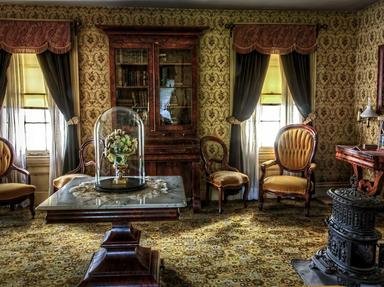Quiz Answer Key and Fun Facts
1. In 1952, an anti-colonial group fought against the British in the Mau Mau Rebellion. Though the British were militarily victorious, the conflict paved the way to independence for the colony in the 1960s. In which African nation did the Mau Mau Rebellion take place?
2. In 1978, the Communist People's Democratic Party of Afghanistan (PDPA) took power in the Saur Revolution. Who was the Afghani president who was assassinated in the violent overthrow of the government?
3. In 1917, the last Russian czar, Nicholas II, was ousted from power during the February Revolution. Later that same year, the Bolshevik party ousted another leader, the head of the Provisional Government, in order to create a Socialist state. What was the name of the leader of Provisional Government who was exiled following the October Revolution?
4. In November 1989, with the world changing and Communism falling by the wayside, one nation quickly and bloodlessly went from a Communist state to having a democratic government, after a series of protests in what has been named the Velvet Revolution. In which country did this take place?
5. In 1945, Ho Chi Minh and the Viet Minh began demonstrations throughout Vietnam, calling for the country's independence. They also quickly occupied public buildings. This uprising is named for the month in which it occurred; which month?
6. One of the more well-known Communist states of the 20th century, other than the USSR, was Cuba. The road to becoming a socialist state began when a group of revolutionaries, including Fidel Castro, attacked a Cuban military base, leading to a struggle lasting several years, culminating with the eventual overthrow of Fulgencio Batista. In which decade did this take place?
7. In a violent revolt that lasted only one week, the Communist leader of Romania was forcibly removed from office in 1989. While other Communist nations around this time were beginning to lean towards reform, this leader continued his harsh policies, leading to an increasingly discontented population. Who was the dictator who was killed in the Romanian Revolution?
8. In 1943, a rebellion against the German occupiers occurred in an effort to stop the deportation of Jews to extermination camps. It was the biggest effort on the part of Europe's Jewish population to rebel against their oppressors. In which Eastern European city did this take place?
9. In 1986, true democracy was restored in the Philippines following the People Power Revolution, a series of nonviolent demonstrations and protests. The former president voluntarily left, and Corazon Aquino took office. Who abdicated the presidency in February 1986?
10. In 1979, the Iranian Revolution saw the collapse of Shah Mohammad Reza Pahlavi's monarchy. Who was the leader of the Islamic Movement who became the Supreme Leader of Iran following the Revolution?
Source: Author
guitargoddess
This quiz was reviewed by FunTrivia editor
bloomsby before going online.
Any errors found in FunTrivia content are routinely corrected through our feedback system.

